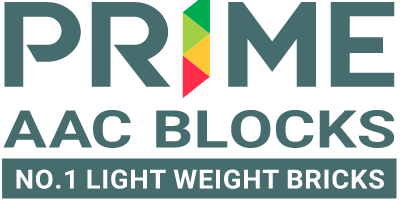AAC blocks are dispatched within 2-3 working days after confirmation of order. There is no seasonal variation in supplies.
What are the lead-times for supply of AAC blocks?
How durable is AAC in various climates?
Autoclaved Aerated Concrete is extremely durable. It does not rot or decay like wood or other organic materials. It does not rust like metal. Termites and other pests cannot cause damage to it. AAC is not combustible. The millions of tiny pores in AAC cushion the building, preventing progressive collapse.
What type of mortar is used with AAC?
1:6 cement mortar or 1:1:5 in cement fly ash mortar of 10 mm thickness for both vertical and horizontal joints.
Which exterior finishes are suitable for AAC?
AAC can be finished with brick, stone, stucco, wood / vinyl siding or any other standard finish, following the recommendation of the architect.
Is AAC a new building material?
No. AAC was invented over 70 years ago in Sweden. Since then, it has gained acceptance around the world especially in Europe, Middle East, North America, China and now in India.
Which interior finishes are suitable for AAC?
AAC can be finished with sheet rock (directly attached), plaster (directly applied), tile, non-vinyl wallpaper, paint or any other standard finishing.
Why are AAC Blocks ``Green`` Building Material?
The production process of AAC Blocks uses fly ash which is a by-product in thermal power plants. Conventional bricks need fertile top soil. Therefore use of AAC Blocks as an alternative to red bricks prevents needless erosion of fertile top soil. Also, the production process of AAC Blocks is very energy-efficient and emits very less CO2. AAC Blocks used in construction of 15 sq ft of carpet area uses 0.9677 kg of coal. AAC Blocks are recyclable. Usage of AAC Blocks significantly reduces electrical expenses due to reduced HVAC (Heating, Ventilation and Air-Conditioning) load, qualifying it to be a “Green” building material.
